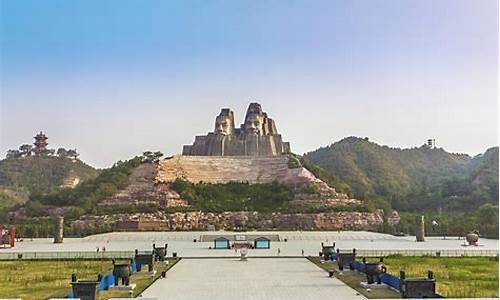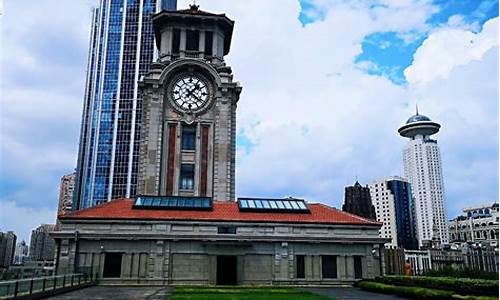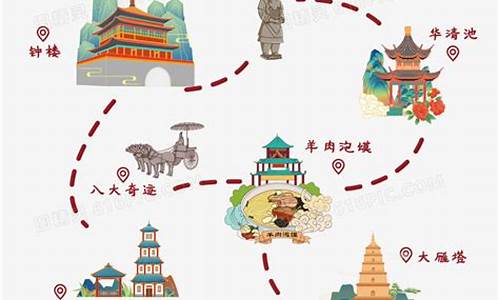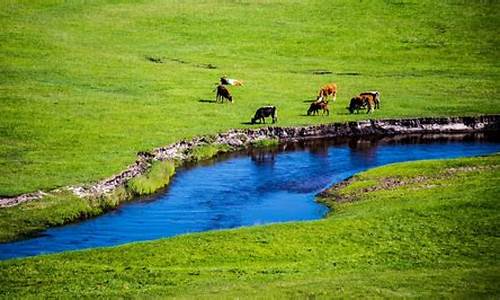wansheng_万盛
1.怎么用英语介绍重庆
2.万盛黑山谷英语作文
3.张达人请进
4.阳痿吃什么药或食物?
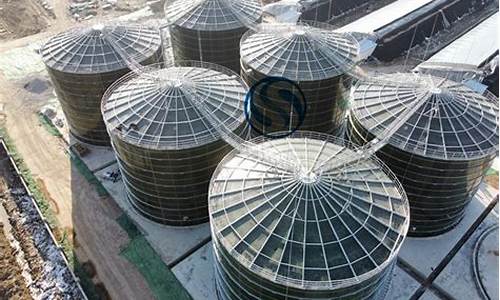
黑山谷在万盛区,,今日万盛天气:多云,气温38
~
29℃,风力
微风
明日万盛天气:阵雨
转
中雨,气温33
~
28℃,风力
微风
后天万盛天气:多云,气温30
~
25℃,风力
微风
07月08日万盛天气:阵雨
转
多云,气温31
~
23℃,风力
微风
07月09日万盛天气:多云,气温33
~
24℃,风力
微风
07月10日万盛天气:多云
转
阵雨,气温33
~
24℃,风力
微风
07月11日万盛天气:多云,气温33
~
25℃,风力
微风
://.tianqiyubao.cn/weather/zhongqing_wansheng
怎么用英语介绍重庆
两个叫法是一样的东西。
2500年前释迦牟尼涅盘,弟子们在火化他的遗体时从灰烬中得到了一块头顶骨、两块肩胛骨、四颗牙齿、一节中指指骨舍利和八万四千颗珠状真身舍利子。在历史烟云的变幻中,绝大多数舍利被散失、湮没、毁坏。不幸中的万幸,1987年在法门寺的地宫中发现了许多唐代古物,这颗世界上惟一的"佛指舍利"即在其中。出土时,佛指舍利用五重宝函包装着,高40.3毫米,重16.2克,其色略黄,稍有裂纹和斑点。据史料记载,唐时,该舍利“长一寸二分,上齐下折,高下不等,三面俱平,一面稍高,中有隐痕,色白如雨稍青,细密而泽,髓穴方大,上下俱通”。所记与实物吻合,只是颜色因受液体千年浸泡变得微黄了。最后有连接。
"舍利子"原称为"舍利",后来才称为舍利子.舍利 原是印度语译为(设立罗)....等各种不一之名称,其意义为(遗留物)或(灵骨) 舍利子不完全经由火化而得,也有经由 颂经 ' 刻经 ' 及 礼佛或 金刚不坏全身舍利 与天地灵气之结合而成.
"舍利子"为个人戒定慧修行成就之结晶。也是说明修行者已得成果的见证,可以坚定弟子修行。因此佛徒看到舍利即像看到佛菩萨,顶理参拜,诚心供养。但佛祖涅盘前就告诉弟子,不要理会他的舍利,而要注重"法身舍利",也就是他的言行身教集成的典籍。
舍利子有很多种,真正的舍利子硬度极高,用铁锤敲打都锤砧俱陷,而丝毫无损 。色彩也不一定,不同色彩也有不同含义。还有一些片状彩色硬块,比较容易碎裂,叫舍利花。后面的录像里面都能大量看到。
关于舍利子的解释和故事我偷点懒.可以看看如下连接,图文并茂.
://.tienzin.idv.tw/tienzin-s/tienzin-05-relics.htm
据说真正的佛舍利是纯白色的,甚至可以至诚祈祷来。吴孙权时,康僧会与弟子们,虔诚祈求,竟然于空瓶中发见舍利子。民国中期,朱庆澜将军去西安,经人陪了去游兴教寺——玄奘法师的塔院。朱公虔诚礼敬,塔上忽落下半块砖,检起来看,有两颗舍利子附在砖上。还有一些大德有至诚祈请而凭空得到佛舍利的记载。
这样的舍利子还会长大、生小舍利。明初,西藏宗喀巴大师——黄教的创立者,晚年落下了一颗牙齿,交与大弟子保藏。后来问起,弟子是作为舍利而恭敬供养着。拿回来看,牙根上长满了舍利子。当时,取下舍利子,分给弟子们供养。而此牙齿,在恭敬供养中,经常生长微粒的舍利子,一直到现在。所以还有一个佛门宝物叫"佛牙"。
也许觉得太遥远吧!那末,近在台北,前司法院长居正,生前供奉舍利子五颗。死后,移供中正路的善导寺。去年,发见舍利子已增为十颗。今年春,分了五颗,供养在新竹青草湖的福藏塔。据一位大德记载,83年,亲见中华佛教居士会的一位居士以红花养有一罐舍利子。当舍利子长满罐后分送他人,不久罐中又会长满。他本人有几颗小舍利,确实会逐渐长大。但是大多数的舍利并非纯白色,也可算是舍利,但不是真正的佛舍利。但舍利子更大的意义在于可以让佛徒时刻记得大德生前功德,不断精进。
虽然这些看来是难以想象的神话,但这其实和修行者遇到的异像相比实在不算什么。不过这也是舍利子倍受世人敬重的原因之一吧。
我先要说明,现代佛教修行者生平和生成的舍利都是得到国家佛教机构认可和记载的。
94年7月20日摘自《江南晚报》的一则报道:苏州灵岩山寺82岁的法因法师圆寂火化后,获五色舍利无数,晶莹琉璃一块,且牙齿不坏。尤为奇特的是,火化后其舌根依然完整无损,色呈铜金色,坚硬如铁,敲击之,其声如钟,清脆悦耳,稀世罕见。
想看到舍利的生成过程,就请先看这段录像
ftp://2.fofilm.org/wsj/zrfljswsj.rm
下载观看,如果觉得前面太罗嗦,请从第32分钟开始播放.这位修了5年的女居士往生极乐,焚化尸体后竟然不可思议的得到了一尊舍利佛像和莲花座还有及其大量的舍利花,佛陀慈悲,让大家有机缘亲证虚实。这也是佛法殊胜的地方,无数法门,可以因缘说法,即使目不识丁的人也可以一心只念"阿弥陀佛"带业往生,永脱轮回。阿弥陀佛。
://.fofilm.org/wsj/miaoyin1.rm
如果不相信死后可以往生极乐,可以看看这个录像。仅仅修行了一年,过程中出现了一连串神奇的经历,足以让人信服的往生经历。如果觉得太长,可以从中间开始看。如果能给父母和家里的老人观看,是行大孝道,功德无量。
还有几个往生的实例录像。://.fofilm.org/wsj.htm
在网上可以轻松搜索到多如牛毛的关于舍利子的记载和报道.
还有更神奇的肉身不腐,根据征兆,我猜想可能也是一种全身舍利。
://.geocities/Tokyo/Dojo/5132/data-001.htm
"周凤臣居士肉身记"
无论如何,两年时间,没有任何防护措施摆放在家中却没有任何变异,而且自然的琉璃化,现在的科学确实无法解释。
科学家们的解释说,这可能是长期食素的结石和矿物质沉积。但是这个猜想是明显不成立的,因为少量的舍利一般是火化后在骨头上找到的,而且很多大德圆寂后如此大量的舍利子就说明舍利不可能都是矿物沉积(如第一个录像的女居士)。患结石症的人很多,结石多为水垢样,颜色难看,硬度上来说更不可能是舍利子。为何普通人就没有纯净剔透的舍利,但是得道的人即使只修行一年也会有舍利?
有本书介绍了自古及今许多与舍利子有关的高僧故事、奇闻异迹--《神奇舍利子》木桥居士 著
://.lotusworld.org/shelizi/index.htm
最后,谁想看佛指舍利的发掘过程,和其他一些神奇可以到这个地址看看
://.fosss.org/brgq/roushen/fms.htm
://.miaoyin.net/fomenqiguan/fzslfg.htm
神奇的舍利
光音
也许很多人看过姜文主演的"天地英雄"和杨紫琼的"天脉"等,不少人会对这个神奇的"佛舍利"产生浓厚的兴趣。
舍利子的各种现象都表明不可能是结石,学医的应该明白结石的外观以及物理性能.结实主要成分是钙质或金属盐沉积,形态和水垢相似,也很易碎,这些东西在高温下都会变成粉末状的的氧化物. 结石病人数以千万,但只有修行者才会有舍利子. 大德的舌头,心,等没有骨质的软组织也可火化不坏形成舍利子.连念佛鹦鹉的舌头也能成舍利. 何况体内结石数量及少,否则会危及生命,但是大德有时候出现舍利子的数量非常惊人,而且色彩和形态各异.并不是常年吃斋和尚才会有.仅仅皈依一年的在家居士,往生焚化后遗骨上也出现了舍利子,而普通素食者并没有舍利出现。
当然,也有一部分所谓的"舍利"确实是没有完全烧化的骨质和牙齿,但结石是不能经受焚化后成为"舍利"的.
"舍利子"原称为"舍利",后来才称为舍利子.舍利 原是印度语译为(设立罗)....等各种不一之名称,其意义为(遗留物)或(灵骨) 舍利子不完全经由火化而得,请看后面实例.
"舍利子"为个人戒定慧修行成就之结晶。也是说明修行者已得成果的见证,可以坚定弟子修行。因此佛徒看到舍利即像看到佛菩萨,顶理参拜,诚心供养。但佛祖涅盘前就告诉弟子,不要理会他的舍利,而要注重"法身舍利",也就是他的言行身教集成的典籍。
舍利主要有三种:
1、全身舍利:广东韶关慧能六祖大师、安徽九华山肉身殿所奉之金地藏和尚;四川成都石经寺之石经祖师等。就是我们说肉身不腐的"肉身菩萨"。
2、碎身舍利:就是平时大家所说的舍利子。释迦牟尼佛火化后之舍利、罗桑殿达活佛、竹斋法师……均为碎身舍利。 其中又分为多种。
3、法身舍利:一切上座部、大众部、藏传、汉传佛教的一切经典,皆属法身舍利。就是大德留给后人的智慧结晶。
有的舍利子硬度极高,用铁锤敲打锤砧俱陷,而丝毫无损。色彩也不一定,据说不同色彩也有不同含义,还有一些片状彩色硬块,比较容易碎裂,叫舍利花。录像和里面经常能大量看到。
想看到舍利的生成过程,和目睹一尊神奇的舍利佛像,就请下载观看这段录像,是赵荣芳老居士往生的纪实
://hcbx.vicp.net/wanshengjishi/zhaorongfangjushiwangsheng.rm
如果觉得前面太长,请从第32分钟开始播放.这位修了5年的女居士往生极乐,荼毗后竟然不可思议的当场得到了一尊舍利佛像和莲花座还有及其大量的五彩舍利花(数量极其惊人),我佛慈悲,让大家有机缘亲证虚实。
这是一代大德-虚云老和尚的舍利子,透明无暇,尤其难得.
://.bfnn.org/hsuyun/gb/photo/photo02.htm
更多的舍利子和介绍.
://.fosss.org/sldg/zx/yylrfr.htm
佛指舍利放光
://.fosss.org/brgq/roushen/fms.htm
念佛鹦鹉的舌头舍利(图文).居士家中一只鹦鹉不说别的,只会念佛,往生后火化,舌头成不坏舍利,另有小舍利若干.不可思议。
://.jiuhuashan.cn/jhs99/yggy-5.htm
还有不少往生的实例和录像,其中多有舍利子。仅仅皈依一年往生的在家居士,往生焚化后遗骨上也出现了舍利子.
圆照法师法体荼毗一天一夜,结束时由骨灰中滚出来的心舍利。
://.fosss.org/brgq/roushen/yzs.htm
1993年6月l2日,已十多天水米未进的九十三岁比丘尼圆照法师,表情突然十分兴奋激动。晚上九时多,她对前来探望的寺内弟子宣讲佛法后,说一句:“我将心留给众生。”便无声息。众人看时,她已圆寂:闭眼盘腿,打坐而化。
四天之后,弟子们在寺内的大青石板上架柴荼毗。大火烧了整整一天一夜,法师遗骨成灰、牙齿等形成一百多颗大小不一、形状各异的舍利。尤为神奇的是:法师的心脏久焚不化,成为一个呈黑褐色的巨大坚固子——(火化刚结束,心脏尚软,以后变硬)。在场的百余名僧俗均亲眼目睹。
万盛黑山谷英语作文
帮您找了一篇有关重庆的英文介绍,单词难度适中,希望对您有所帮助...
Widely acknowledged as the largest industrial and economic center in southwestern China, Chongqing City is a popular destination for trelers with its hilly slopes, rivers, night views and spicy food.
Meaning "double celebrations" in Chinese, the city was built in the 11th century BC during the Zhou Dynasty. The city was founded in 19. Prior to then, it was a city in Sichuan Province. Now Chongqing is the biggest city in China in terms of area and population.
Known as one of China‘s "Three Furnaces" (along with Wuhan and Nanjing), Chongqing is unbearably hot during the summer. The surrounding mountains seem to trap the heat. It is pleasant to visit the city in other seasons.
Also known as "Fog City" in addition to "the Furnace," Chongqing is covered with a thick layer of fog for an erage of 68 days a year, usually in spring or autumn. The fog gives the place an air of mystery.
Spread across a number of low hills (erage elevation of 400 meters), surrounded by mountains, and straddling the Yangtze River, Chongqing is a natural wonder.
The main features of the downtown area are the hilly slopes. Trelers soon learn to get used to the feeling of going up and down, up and down. Locals compare the terrain to San Francisco.
At night, climbing up onto one of the less-populated hills affords panoramic views of the city‘s night lights. Due to the city‘s hilly terrain, you can see a hierarchy of lights in all directions.
Lights in different colors sparkle and shine in layers and are reflected in the sparkling river, creating a mirage-like view -- it‘s hard to tell the river and the lights.
But it is to cruise down China‘s longest river, the Yangtze, passing through the famous Three Gorges that most tourists come to Chongqing. With over 100 cruise ships that begin their itineraries in the city, there is no better place to start a Three Gorges river tour.
Choingqing‘s hot spicy food is famous. The most well-known dish is the hotpot, which is a pot of boiling broth that you put various uncooked food items into. The meal always takes a long time, so it is good to eat it in the company of others.
Situated on the bank of the Jia Ling River, not far from its confluence with the mighty Yangtze is the ancient village of Ci Qi Kou, formerly known as Long Yin. Covering an area of some 1.2 square kilometres (291.6 acres) it is 14 kilometres to the west of Chongqing Municipality.
Chongqing itself has undergone many changes over the centuries, changes that he not been reflected in Ci Qi Kou with the consequence that the village conveys an impression of what Chongqing would he been like in the distant past. This fact has been recognized by the State Council and in 1998 Ci Qi Kou became a protected cultural site.
The history of Ci Qi Kou can be traced back for more than 1700 years. During the Ming and Qing Dynasties (1368-1911) it was famous for its production of porcelain. To date, over twenty old kiln sites he been discovered there. It is because of the importance of the porcelain industry that the name has been changed from Long Yin to Ci Qi Kou which being translated means Porcelain Village. However, the village was also an important supply post for shipping on the river, a fact that explains why there are so many shops lining the twelve lanes ped with their large flag stones that form the main routes. Here you will find many outlets for craftwork, groceries and the like as well as a horologist, photography supplies, drugstore and a tempting supply of roasted nuts and seeds. As one would expect there are also many teashops and restaurants to cater for the many visitors who come to see something of a way of life that has existed here for so many centuries.
The majority of the houses date from the Ming and Qing Dynasties, periods during which many masterpieces of Chinese architecture were created. Much of the two and three storey construction is of bamboo and timber. Blue bricks and pillars set off the snow-white walls that contrast in turn with vermilion doors and lattice windows. Black tablets and lanterns adorn the gates to complete the authentic and traditional earance of the properties. The quietly flowing waters of the Jia Ling River pass by the front of the village and he been its lifeblood for as long as anyone can remember. For it was the river that brought goods and people here as well as carrying local products off to customers at home and abroad.
The three notable attractions of the village are the tea bars, the artists' studios and the Shu Embroidery workshops. Surprisingly, there are more than a hundred tea bars each with their own particular characteristics. Here friends enjoy a chat or meet to discuss business. So the tea bars offer the opportunity for you to meet the locals and also become acquainted with the unique folk opera.
The ateliers, where you may see the work of the local artists will be of great interest. It has been said that the more beautiful a place may be, the more artists it will attract. You are sure to be amazed by the quality of the work on show and in progress as the many artists record the local scenes with skill and dedication. With so many artists working in Ci Qi Kou, you will be spoiled for choice when seeking a souvenir of your visit
Artistic ability of another kind will sure to please your eye when you visit a Shu Embroidery workshop. The craft is famous throughout China and the skill of the women you will observe working in the village is unsurpassed. It will be difficult to decide whether to opt for a painting or a piece of embroidery as a reminder of your visit as the choice on offer is truly stunning.
Choice is no less a problem when it comes to deciding where to take a meal at one of the many restaurants. Local dishes include Mao Xue Wang, Qian Zhang Pi and JiaoYan Huang Sheng. All come very highly recommended. You may well ask 'What on earth are they?' It is our opinion that whichever you try, you will not be disointed and will soon come to realise why they are so popular.
It is often said that a visit to China is a cultural experience. This is never more true than when you visit a place such as Ci Qi Kou where you will find the local residents dedicated to their traditional way of life, unaffected by modern influences to be found in the larger towns and cities. Above all, you will find a friendly welcome awaits you as the people of Ci Qi Kou share their special way of life with you for the duration of your visit.
Chongqing is the birth place of the hot pot in China. Once upon a time, it was a seasonal food designed to protect against the low temperatures and frigid winds of the winter. People would sit around a table, eat hot pot, and revel in the instant warmth that would flood their bodies. Hot pot has become more and more popular today, and it is widely enjoyed by people and regardless of seasons and regions.
Eating hot pot is a joyful experience. First, you need to choose the pot - spicy, pure or a combination of two - for the soup and dipping sauce. After the spiced soup boils with a hazy steam, fish, meat, bean curds and vegetables can be added. When the soup boils again, you can eat by dipping them in a little bowl of special sauce ¨Cbut be careful of the burning hot soup!In Chongqing, hot pot restaurants can be found everywhere and many he become very popular among the local people. Xiao Tian E (Cygnet Hot-Pot Palace) and Su Da Jie, E Zhang Men are the restaurants most suited for mass consumption. The hot pot restaurants in the Chongqing 5-star Harbour Plaza also serve decent food in a cozy environment
Introduction Surrounded by water on 3 sides, Chongqing is situated at the confluence of Yangtze River and Jialing River. With beautiful hills and mountains the "Mountain City" has long been reputed for its wonderful scenery. To its east, there is the famous Three Gorges on the Yangtze River; to its west, there are the 50, 000 stone figures sculpted on the cliffs during the Tang and Song Dynasties as the acme of perfection; in its south, the stone forests in Wansheng District seem superlatively made, yet they were created by nature; and in its north you cannot help meditating on the dinosaur fossils of 180 million years ago. The Fishing Fortress in Hechuan has long been widely known. The waterfalls, stones, forests, springs, and outdoor games in Simianshan Mountain in Jiangjing are fascinating. In the city proper. there are attractive Eling Hill, Loquat Hill, Night Scene of the Mountain City, Flowers in the Nanshan Park decorating the mountain city. The East, South, West, North, and Tongjing Hot Springs are like five pearls scattered in the suburbs. The Anti-Japanese Remains present the combat achievements in Chongqing by the Anti-fascist Allies during the Second World War. and the Red Crag Village and Geleshan Martyrs' Cemetery bear the glorious loyalty of the revolutionary seniors. For the city itself, it came into being three thousand years ago and got its name 800 years ago. On December 8, 1986, it was ointed one of the Historical and Cultural Cities of China by the State Council.
As one of the four municipalities under the Central Government (MDUCG), there are two things in particular immediately distinguish Chongqing from the other MDUCGs (Beijing, Shanghai and Tianjin). The first, it is unusually large in area, covering 82,400 sq km, 2.4 times the total area occupied by Beijing, Shanghai and Tianjin municipalities. The 43 urban districts and counties under its jurisdiction represent three quarters the total number governed by the three other municipalities. Secondly, it is unusually large in population. At the end of 19, 30.429 million people lived in Chongqing, equivalent to 83 percent of the total population of Beijing, Shanghai and Tianjin. In Chongqing, however, more than 80 percent of the population is rural, a figure far higher than in the other municipalities.
Thus, of all the municipalities, Chongqing has the largest area and population and the highest proportion of peasants.
HISTORY Chongqing's history extends back at least 3,000 years, endowing it with much historical and cultural significance. Traces of man's presence he been found from as far back as the end of the Old Stone Age 20,000 to 30,000 years ago. From the beginning of the Shang Dynasty (c. 16th century B.C.) to the close of the Warring States Period (221 B.C.), it was the capital of the state of Ba. From the Qin Dynasty through the Eastern Han Dynasty (221 B.C.-220 A.D.), it was a prefecture also known as Ba. During the Sui and Tang dynasties, (581-907 A.D.), it was known as the sub-prefecture of Yuzhou, hence its standard byname "Yu.'' Subsequently, during the Northern Song Dynasty (960-1127 A.D.), it was renamed Gongzhou. In 1189, during the Southern Song Dynasty, Zhao Dun, later the Guangzong Emperor, was given the title Prince of Gong. Regarding this as an exceedingly joyous event, he upgraded its status to that of a prefecture and renamed it as "Chongqing'' or "redoubled celebration,'' the name it carries to this day.
The Ming and Qing dynasties (1368-1911) saw goods spin in and out of the city as merchants from the four corners gathered. In 1891 Chongqing became an open port and a customs house was established there. Shipping and trade and the financial and processing industries grew steadily more prosperous as the city came to link southwestern China and the upper reaches of the Yangtze River with the rest of the world. In 1929 Chongqing was formally declared a city. Following the outbreak of the War of Resistance Against Japan in 1937, the Kuomintang (KMT) moved the from Nanjing to Chongqing. In 1939 the city was elevated to a municipality under the Executive Yuan. Beginning in 1940 it served as the wartime ``provisional capital'' for the KMT , becoming China's political, economic, financial, commercial, transportation, cultural and diplomatic center. After the KMT returned to the formerly occupied capital Nanjing in 1946, Chongqing returned to its status as a municipality under the Executive Yuan.
After the founding of the People's Republic of China in 1949, the Southwestern Sub-bureau of the Central Committee of the Communist Party of China (CPC) and the Southwestern Military and Political Commission were set up in Chongqing. The city was made a municipality directly under the central and continued as the political, economic and cultural center of southwestern China. After the system whereby the nation was organized into large administrative zones was rescinded in 1954, Chongqing's status was changed to that of a city under the jurisdiction of Sichuan Province. In 1983 the central decided to include Chongqing in the first group of cities where pilot reforms of the economic system could be tried out, its economic planning being directly supervised by the State Council. The state also ge the city provincial-level administrative powers over its economy and formally made it a foreign trade port. Since entering the 1990s China has been effecting its strategy of opening and developing the Yangtze River. Chongqing was listed as an open city. In September 1996, with the roval of the State Council, Sichuan passed administration over the cities of Wanxian and Fuling and Qianjiang Prefecture to Chongqing to govern on the province's behalf. In March 19, the Fifth Session of the Eighth NPC discussed and roved a resolution rescinding Chongqing's then current status of city, declaring Chongqing a MDUCG.
Topography Chongqing may be found on the upper reaches of the Yangtze River covering the area 105x17'-110x11' E longitude and 28x10'-32x13' N latitude. The municipality, measuring 470 km from west to east and 450 km from north to south, borders Shaanxi Province to the north, Hubei and Hunan to the east, Guizhou to the south and its former province Sichuan to the west. Generally speaking, the land is higher in the north and south, sloping lower into the Yangtze River Valley in the center. For the most part, the terrain is characterized by low hills, mostly less than 500 meters above sea level. The municipality is home to the Daning River and is fed by the waters of the Jialing, Wujiang, Fujiang and Qijiang rivers, in addition to the Yangtze.
Chongqing has a humid suropical monsoon climate, with little frost or snow, frequent clouds and mist, warm winters, hot summers, early springs and short autumns. The erage temperature in January is 7.5 C and in July, 28.5 C, the mean annual temperature being 18 C. There is abundant rainfall, with annual precipitation eraging 1,000 to 1,400 mm. Rain is particularly plentiful in the nighttime during the weeks when spring passes into summer, giving rise to the common reference "night rain in the hills of Ba, (eastern Sichuan).''
Natural Resources More than 40 mineral products he been found in Chongqing; 25 varieties, most importantly coal, natural gas, strontium, pyrite, halite, bauxite, mercury, manganese, barium, marble, limestone and barite, he proven reserves. With reserves of 320 billion cubic meters, it is one of China's principal sources of natural gas. Reserves of bauxite (74 million tons), halite (300 billion tons), and strontium (1.85 million tons) lead the nation. Reserves of manganese and barium rank second and third respectively.
The areas abounds with biological variety, including more than 2,000 species of vascular plants. Some 380 animal species can be found locally, including the zibet (Asiatic civet cat), otter, clouded leopard, macaque, red-breasted golden pheasants, crown deer and other unusual wild animals. Rongchang is the nation's famous producing base for stud hogs, and Shizhu is a famous base to raise, process and export long hair rabbits. Chongqing has over 120 river fishes. Fish farming is popular in every district and county. Changshouhu Lake and Dahonghu Lake are fish raising bases of Chongqing.
Natural Scenes Chongqing proper is surrounded by the Yangtze and Jialing Rivers, so landscape is very beautiful. It is known as a "Mountain city" and also a "River city" because its buildings are constructed on hills by the rivers. Night scene of the mountain city is a wonderful sight. The South Hot Spring Park, North Hot Spring park, Jingyunshan summer resort and Nanshan park are situated in the near suburbs and Jiangjin Simianshan forest, Wansheng Yunan Stone Forest, Wulong Furongdong Ce, Xiannushan Grasslands, Nanchuan Jingfushan Forest Park are situated in distant suburbs. Along the Yantse River there are a large number of scenic spots of mountains, rivers, forests, springs, cataracts, gorges and ces such as the mighty Three Gorges, Daninghe and Xiaoninghe River valleys, Yunyang Longgang, Fenjie Heen Pit and Earth Crevice, Wuxi Hongcheba Grasslands and Wushan Zhiyanhe River Three-Colored Cataract. Construction of the Three Gorges dam will form a 600 kilometers long and more than 1,000 square kilometers big lake on high gorges, an excellent tourist resort will thus be set up.
Historical Sites Historical sites can be sought after in Chongqing Museum, Hongyan Memorial Hall of Revolution, Geleshan Revolutionary Martyrs Tomb, Jiang Keshek's Residence, Zhang Zizhong's Apartment, Lingyuan, Kongyuan and some other Wartime Capital remains. Dazu Rock Carvings is the gem of stone sculptures of the later period. Hechuan Diaoyucheng city, that is called "the place where Whip of God was broken," is one of China's three ancient battlefields. Fengdu's Ghost City and Ghost King Stone Carvings, Fuling's Baiheliang (the forest of steles under water), Shizhu's Xituoyunti, Zhongxian's Shibaozhan, Yunyang's Zhang Fei Temple, Liangping's Shuangguitang Temple, Fengjie's Baidicheng City, Wushan's Lu You Ce and Ba people's hanging coffins and the natural scenes of the Three Gorges add radiance and beauty to each other.
Tourism The center of the old city of Chongqing is almost completely encircled by the two arms of the Yangtze and Jialing rivers. Row upon row of buildings climb the hills beside the rivers, giving rise to its nickname the "city of hills" and the phrase "night views of the hilly city" known well both at home and abroad. When night falls, the lights of a myriad families shine like stars, climbing to the sky, where they join the star-studded dome above, the flowing water and open sky each playing off the other's radiant beauty. Close by in the suburbs are many scenes of natural beauty, including the Southern and Northern Hot Springs and summer retreats such as Jinyun Mountain and the Southern Mountain. Further out can be found the primeval forests on Simian (Four-faced) Mountain in Jiangjin City, the Yunan Stone Forest in Wansheng, Furong (Hibiscus) Ce in Wulong County, the Gaoshan (High Hill) Grasslands on the Xiannu (Fairy Maiden) Mountain, and the Jinfoshan (Golden Buddha Mountain) Forest Park in Nanchuan City. Marvelous spectacles along the Yangtze River include the magnificent natural landscapes of the Three Gorges, the Large and Small Ninghe River Gorges in the Wushan Mountains, the Dragon's Vat in Yunyang, the fissures and hollows carved out of the living rock with divine skill as if by a demon's axe in Fengjie, the Hongchiba Gaoshan Grasslands and Xiabing Ce in Wuxi, and the Three-Color Waterfalls on the Ziyang River in Wushan. When the Yangtze Three Gorges Reservoir is completed, the 600-km long, 1000-sq-km manmade ``lake'' will delight tourists with the sheer walls of the towering gorges contrasting with the even waters below.
In addition to such natural splendors, Chongqing has many fascinating reminders of man's accomplishments, such as the Red Crag Village Revolutionary Memorial Hall
张达人请进
My hometown is in pine valley, the mountains green, water clear, is a beautiful place. There is a stone forest, dark valley, nine pot of wellknown forest park, ordovician park, etc. But my forite is the beauty of the dark valley.
Black valley is located in chongqing wansheng Montenegro town, is the national AAAA level scenic area, a valley ecological preserve one's health. There mountains green water show, according to deep and remote valley, charactizing a fine spring day, is a leisure good place for summer!
Black valley scenic spot a lot, linger. Especially "camel west", as a head of a camel west. God longdong as a huge mouths open, bottomless, daunting. Suspension bridge is the most fun. Go to swing above, in the past, my heart in my mouth, holding on to the rope, exclaimed jumped to the other side. It's very exciting! Feel the whole valley will joy. Look at that black valley water clear, little fish swimming freely in the water, let a person envy!
This is what I like the dark valley. I love you - black valley!
更多优秀英语作文尽在:英语汇作文网 原文带翻译网址:://.yingyuhui.cn/gaozhong/1444.html
阳痿吃什么药或食物?
(你好,我不是张达人,但相信能帮到你一点。)
如果我们把顾曰国“礼貌原则”的五条准则与Leech关于礼貌的论述加以比较,就会发现中、西方的礼貌原则在语用含义和文化价值上是有差异的。其中的“贬己尊人的准则”是最富有中国文化特色的礼貌现象。如在指代自己时。中国人常用“鄙人”、“晚生”、“在下”等;而指代他人时。则常用“您”、“贤弟”、“贵公子”等。称呼涉及礼貌是汉语文化的特点。称呼方式与礼貌有关。代表着人与人之间的一种社会关系。也折射出说话者与听话者的思想感情。如亲呢、喜爱、威胁、警告、讽刺、戏谑等。
Comparing the Five Manner Norms put forward by Scholar Gu Riguo and these exposition and discuss about manners which made by Doc. Leech, we will learn about that some differences exist between the manner principles of China and western countries on the pragmatic meaning and cultural value. The rule of regarding others while preaching self down is a politeness and manner phenomenon with typical Chinese cultural characteristics. For instance, a Chinese is usually use words such as “your humble servant”, “your student”, “your subordinate” and so forth when referring to oneself while when it comes to others, a Chinese prefer to use “sir”, “my brother”, “your son” and so on. It’s a distinctive feature of Chinese culture that all salutations are closely related to politeness. Moreover, salutations represent the social relations between people as well as reflect the sentiments of speakers and listeners such as intimate, cherishing, threaten, warning, satire, teasing and so forth.
汉语的称呼一般需要说明彼此之间的关系:亲属、同事、师生:上下级之间要体现出职务、头衔。如“二叔”、“李局长”等。在不同场合用不同的称呼,遇到不同身份的人用不同的称呼。甚至为了达到某种目的和效果。也用不同的称呼,这充分体现出汉语称呼的礼貌性。再称呼语上,中、西文化存在着巨大的差异。在中国文化中,学生对老师。晚辈对长辈。下级对上级是不能直呼其名的。
Typical Chinese salutation will explain the social relationship between each other like relatives, colleagues, teachers and students; salutations between superior and subordinate should reflect the post or the rank like “Uncle”, “Director Li” and so forth. In China, different salutations should be used at different conditions or greet people with different status and titles, and a special salutation even might be used just for realizing a certain purpose or achieving a wished effect, which fully reflects the politeness and manner principles of Chinese salutation. Huge differences about the salutation exist in Chinese culture and western culture and in Chinese culture, a junior, a younger or a subordinate must not address a senior, a elder or a superior disrespectfully by name, or it might be thought as a impolite or ungracious behior.
因为中国文化传统是“重名分,讲人伦”,所以在称呼上也要遵循“仁”与“礼”的法则。要遵循“贵贱有等,长幼有序。男女有别”,否则会被视为“没礼貌”。而西方社会的价值观是“人为本”,“名为用”,他们崇尚个人主义,提倡自我表现,个性解放,所以在称呼上也往往以“先生”、“女士”代替,一般都可以直呼其名。即使儿子称呼老子。下级称呼上级,学生称呼教授也是如此。这就要求我们在英语写作中学习礼貌原则的同时也应对中西方文化进行比较,并以此来提高跨文化的交际意识。
“Value a person’s status and stress human relation” is the Chinese cultural tradition, consequently, the salutation for others should also abide by the principles of “Benevolence” and “Priority” as well as follow the rules of “distinctions between the senior and junior, affections between younger and elder, a prudent reserve should between the male and female”, or it could be thought as “unmannerly and rude”. By contrast, the social value of western country is “people-oriented while the salutation is just the salutation” and western people advocate individualism and promote the self-expression and individual liberation. Subsequently, people of western countries tend to use “Mr.” and “Miss” to address others or salute others directly by the name which can hens on a son to the father, a junior to the senior, or a student to the professor. This suggests that we should not only learn these manner principles in English writing but as well compare the culture between Chinese and western countries, thus to strengthen the awareness in cross culture communication.
(欢迎交流指正)
一.消除心理因素。要对性知识有充分的了解,充分认识精神因素对性功能的影响。
二.节房事,戒手*。长期房事过度,沉浸于,频繁手*导致精神疲乏,是导致阳痿的重要原因,
三.饮食调养。多吃壮阳食物:壮阳食物主要有狗肉、羊肉、麻雀、核桃、牛鞭、羊肾等;动物内脏因为含有大量的性激素和肾上腺皮质激素,能增强精
子活力,提高,也属壮阳之品;此外含锌食物如牛肉、鸡肝、蛋、花生米、猪肉、鸡肉等,含精氨酸食物如山药、银杏、冻豆腐、缮鱼、海参、墨鱼、章鱼
等,都有助于提高性功能。
四.药物调理。万胜生精片中药成分,治阳痿效果好。
五.提高身体素质。身体虚弱,过度疲劳,睡眠不足,紧张持久的脑力劳动,都是发病因素,应当积极从事体育锻炼,增强体质,并且注意休息,防止过劳,
调整中枢神经系统的功能失衡。
(参考资料
://.wanshengshengjingpian/)
声明:本站所有文章资源内容,如无特殊说明或标注,均为采集网络资源。如若本站内容侵犯了原著者的合法权益,可联系本站删除。

